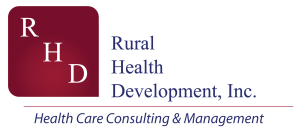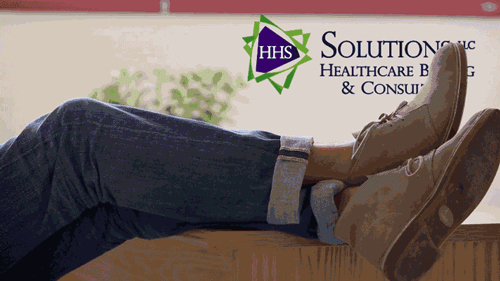The prevention of tooth decay
and gum disease helps ensure a healthier
life for your elder. Weight loss and
pneumonia can result from these conditions
so good oral care and assessments
are very important, but sometimes
may be difficult.
Providing mouth care and performing
oral assessments for elders
with dementia requires patience and
time. Here are a few helpful hints that
should make it easier for the elder and
the caregiver:
• Relax: when the caregiver is relaxed
the elder relaxes enough for you to
lift up the lips to look inside the
mouth or insert the toothbrush. Let
the elder lead. Tell the elder what you
are going to do then ask the elder to
allow you to move forward.
• Project nonverbal confidence: Smile
and use light touch to encourage the
elder to cooperate. Establish and
keep eye contact at the elder’s level.
• Choose your words carefully: Use
short phrases that sound helpful
avoiding orders. Use a calm and
friendly voice, but a firm voice.
• Keep it simple: Only one instruction
at a time and no multiple steps all
at once.
• Give choices: Offer choices but
make sure choices lead to completing
the mouth care or assessment.
Osteoarthritis (OA) is the most common
form of arthritis affecting nearly 27 million
people in the United States. Cartilage and
bone damage that occur in OA can lead to
pain, stiffness, swelling and difficulty using
that joint. In normal joints, a firm rubbery
material called cartilage covers the end of
each bone. Cartilage provides a smooth,
gliding surface fir joint motion and acts as
a cushion between the bones. In OA, this
cartilage breaks down, leading to symptoms
such as pain and swelling and problems
using the joint.
Causes of OA include heredity, being overweight,
joint injury, repeated overuse,
nerve damage, aging, removal of the meniscus
from the know and growth patterns
such as bowed legs. To help keep your
joints healthy, reduce or prevent pain and
retain your independence, it is important
maintain muscle strength and a healthy
weight.
If you think you have OA see you physician
or rheumatologist. Managing your OA
may include regular physical exercise in
the form of stretching (Tai Chi), aerobatic
activity (walking, water exercises, riding a
stationary bike)and strengthening exercises
as well as weight control, therapy,
medications to treat pain and reduce inflammation
and nutritional supplements
(glucosamine and chondroitin sulfate).
Reference: “Osteoarthritis Understanding
OA—From Prevention to Causes and Treatments”,
Arthritis Foundation.
Although Mother Nature
does not seem to be aware that
spring is officially here, by the calendar
it arrived a month ago. There
will be lovely days to take our elders
outside to enjoy the emerging
spring flowers and trees. We often
take for granted our time outdoors,
but our elders don’t always
have the opportunity to enjoy this
privilege because they rely on staff
to take them outside.
Being outside was a way of
life as many of them lived on farms
and ranches or grew flowers and
planted gardens. It’s very important
to incorporate daily outdoor
time in their routines. Take your
activities outside. Exercise groups
and walking can be done outside.
Enjoying the fresh air, listening to
the birds singing, and feeling the
sunshine is not only good for the
soul it helps in the natural production
of vitamin D. Make time, take
time. Happy spring!
This season GI illnesses have
been extra virulent. Norovirus and
other strains of GI flu can leave you
in a weakened condition in a short
amount of time. The “BRAT” diet
will give your bowel a rest as you recover.
This simple diet consists of
four items:
• Bananas
• Rice
• Applesauce
• Tea
To prevent spreading the illness, remember
good handwashing, always
closing the toilet seat before flushing,
and disinfecting with a 10% bleach
solution or hydrogen peroxide. Hydrogen
peroxide is less damaging to
clothing and other items than bleach
is but it is still every bit as effective.
Norovirus and Influenza are
at a high rates this time of year. The
single most important preventive
measure to reduce spreading germs
and getting sick is good handwashing.
CDC Guidelines for good handwashing
are as follows:
When should you wash your hands?
• Before, during, and after preparing
food
• Before eating food
• Before and after caring for
someone who is sick
• Before and after treating a cut
or wound
• After using the toilet
• After changing diapers or cleaning
up a child who has used the
toilet
• After blowing your nose, coughing,
or sneezing
• After touching an animal or
animal waste
• After handling pet food or pet
treats
• After touching
garbage
What is the right way to wash your
hands?
• Wet your hands with clean, running
water (warm or cold) and
apply soap.
• Rub your hands together to
make a lather and scrub them
well; be sure to scrub the backs
of your hands, between your
fingers, and under your nails.
• Continue rubbing your hands
for at least 20 seconds. Need a
timer? Hum the “Happy Birthday”
song from beginning to
end twice.
• Rinse your hands well under
running water.
• Dry your hands using a clean
towel or air dry them.
• If you do feel ill it is very important
you stay home until symptoms
subside so you do not expose
others to your germs.



